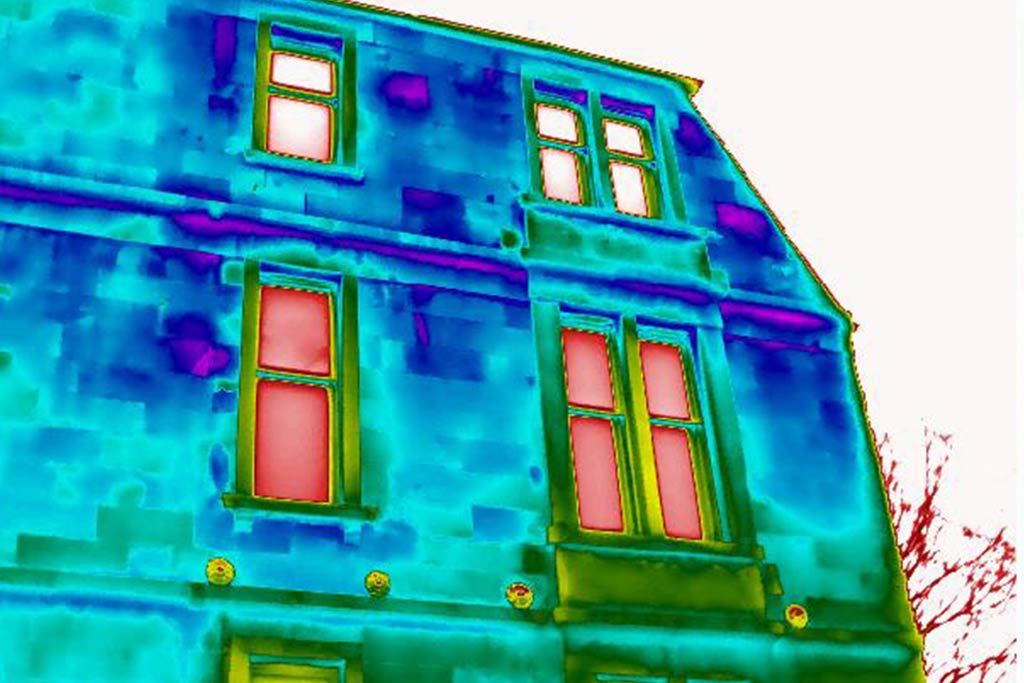Address
Unit F, Prospect Business Centre, Dundee, DD2 1TY
Work Hours
Monday to Friday: 08:30 - 17:00
Sat-Sun Closed.
Address
Unit F, Prospect Business Centre, Dundee, DD2 1TY
Work Hours
Monday to Friday: 08:30 - 17:00
Sat-Sun Closed.

In the wake of COP26, the construction industry is more aware than ever of the urgent need and growing demand to deliver a UK housing stock that is energy efficient and which generates net zero carbon emissions. Stewart Little, CEO of IRT Surveys (IRT), explains how industry professionals can make smarter retrofit decisions to guide them on this essential path to decarbonisation.
The built environment is currently responsible for 30% of the UK’s greenhouse gas emissions.[1] With 80% of 2050’s homes already built, achieving net zero by that date means retrofit projects will play a vital role in decarbonisation, especially as these properties are predicted to account for 95% of future built environment emissions.[2]
The cost and scale of such redevelopment are vast: retrofit work for social housing alone is expected to reach £104bn by 2050.[3] To meet targets effectively and efficiently, the construction industry cannot afford to make ill-informed choices and this is where the use of data can be so valuable; supplying professionals with critical insights to make smarter retrofit decisions and to develop a workable roadmap to net zero.
A data-driven retrofit roadmap
The key to developing an effective roadmap is to identify energy efficiency and emissions issues in existing housing stock before retrofit projects commence. For example, the use of Building Information Modelling (BIM) for building envelope thermal performance analysis and energy efficiency evaluation helps stakeholders understand the issues, their remedies and the investment required. When innovative thermal imaging technology, sensor and other data are paired with BIM, the insights can be of even greater benefit.
Infrared thermal imaging can uncover a wide range of energy efficiency issues, including previously undetected uninsulated or partially insulated cavities, waterproofing problems and insulation defects – and does so without causing damage to the building. As a result, thermal imaging delivers the accurate data needed when deploying energy-efficient solutions at scale and speed, ensuring professionals can make decisions based on facts.
The DORIC Project
The Domestic Optimised Retrofit Innovation Concept (DORIC) project highlights the benefits of bringing together infrared thermal imaging technologies, cloud-based applications and data for retrofit housing projects.
Led by IRT, in a consortium with Aberdeen City Council, SMS PLC and Robertson Construction, and backed by the Department for Business Energy & Strategy (BEIS) £50m investment fund, the £5.2m project sought to improve the energy performance of one hundred Aberdeen homes.
IRT commenced the project by analysing all 22,000 of Aberdeen City Council’s homes to identify those suitable to retrofit. By uploading the authority’s housing data to its DREam online platform, IRT was able to augment, merge and filter the data to determine the best redevelopment programme and align this to appropriate funding opportunities.
To identify which homes would be best suited for retrofit, they were assessed against a range of criteria, including structural integrity and condition, orientation, fuel poverty and whether they could take PV structurally or have external wall insulation. By matching this to the timing of the council’s investment programme, DREam’s critical insights highlighted four hundred suitable properties of which 150 householders agreed to take part. A comprehensive one-time assessment of the properties was then carried out by IRT surveyors, in partnership with SMS and Robertson, to attain the insights needed to deliver the retrofits.
A combination of thermal imaging and 10-archetype internal surveys ensured that the project could be delivered with efficacy while also providing a visual audit trail. Overall, Aberdeen City Council not only obtained maximum insights and value; it benefitted further by using the same model and intuitive polygonal mapping tool to facilitate retrofit work on the next one hundred properties.